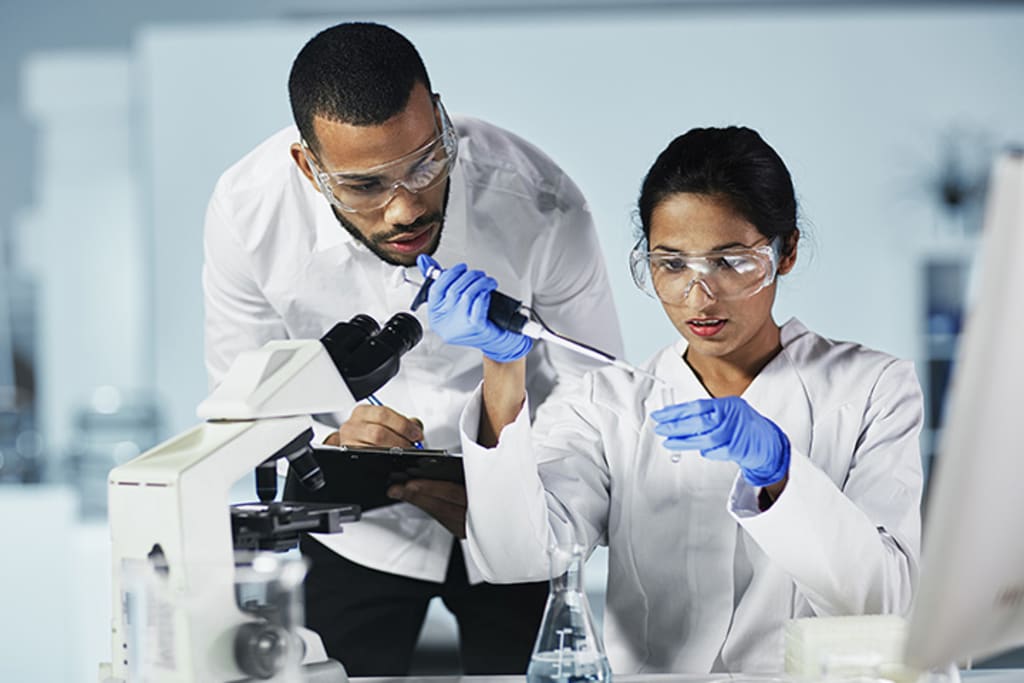
In the spring of 1979, a lab worker in Sverdlovsk, USSR
removed a clogged air filter in the ventilation system
and didn’t replace it.
His note to the supervisor was never transferred to the official logbook,
so when the next shift rolled in,
workers simply started production as usual.
Now, in most labs, this would have been a minor mistake.
But this lab was a biological weapons facility
producing huge quantities of anthrax—
which, if inhaled, can kill up to 90% of those it infects.
This deadly anthrax powder floated out into the sky for hours,
causing the largest documented outbreak of inhalation anthrax on record
and resulting in at least 64 deaths.
What happened at Sverdlovsk was a tragedy,
and the Soviet bioweapons program was a violation of international law.
But these days, it’s not just state-sponsored bioweapons programs
that keep biosecurity experts up at night.
Nor is anthrax their largest concern.
They’re worried about an even more dangerous kind of lab leak.
Since the 1970s, researchers have been manipulating the DNA of microbes
to give them abilities they didn’t have before.
This is called “gain of function” work
and it includes a huge body of scientific research.
The majority of this work helps humanity with very little risk,
for example, engineered viruses are used in vaccine production,
gene therapy, and cancer treatments.
But within the gain of function realm lies an intensely debated sub-field
where scientists engineer superbugs.
Officially known as “enhanced potential pandemic pathogens,”
these ePPPs are typically variants of well-known viruses,
such as Ebola or avian influenza that have been engineered to be, say,
more transmissible or more deadly.
The stakes of this kind of work are much higher:
if even one unusually dangerous virus escaped a lab,
it could cause a global pandemic.
Virologists developing ePPPs argue this research could help us prepare
for future pandemics,
allowing us to jump start treatments and potentially save lives.
For example, in the early 2010s,
several research teams created a deadly strain of bird flu
with the novel ability to spread through the air between mammals.
Advocates of the project argued that by creating this ePPP,
we could learn crucial information
about a worst-case-scenario virus under controlled conditions.
But many critics argued that it’s unclear whether bird flu
would ever evolve in the wild as it did in the lab.
Consequently, they believed the knowledge gained by studying this dangerous virus
wasn’t remotely worth the risk of creating it in the first place.
Both sides of this ongoing debate are trying to save lives;
they just disagree on the best way to do it.
However, everyone agrees that an ePPP lab leak could be catastrophic.
Labs that work with dangerous pathogens are designed with numerous safety features
to protect the scientists who work there, as well as the outside world,
such as ventilation systems that decontaminate air
and airtight “spacesuits” with dedicated oxygen.
Sometimes buildings are even nested inside each other
to prevent natural disasters from breaching the closed environment.
But this technology is expensive to build and maintain.
And even when our tech doesn't fail,
there’s still room for the most common kind of mistake:
human error.
Many human errors are inconsequential:
a researcher spills a sample,
but quickly disinfects the otherwise well-controlled environment.
Other incidents, however, are much more concerning.
In 2009, a researcher accidentally stuck themselves
with an Ebola-contaminated needle,
endangering their life and the lives of those treating them.
In 2014, six vials containing the virus that causes smallpox were found
in an unsecured storage room where they’d been forgotten for decades.
That same year, a CDC scientist unknowingly contaminated
a sample of relatively harmless bird flu with a deadly lab-grown variant,
and then shipped the contaminated sample to the USDA.
While these incidents did not lead to larger crises,
the potentially catastrophic consequences of an ePPP leak
have convinced many scientists that we should stop
this kind of research altogether.
But if that doesn’t happen, what can we do to minimize risk?
Well, first, we can work to reduce human error by examining past mistakes.
Some experts have suggested creating an international database of leaks,
near-misses, and fixes taken that would help labs adapt their protocols
to minimize human errors.
And a robust, well-funded pandemic early warning system
would help protect us from any disease outbreak—
whether it comes from a lab leak or a natural spillover.
Developing the kind of global standards and databases necessary
for these changes would be difficult—
requiring unprecedented international collaboration and transparency.
But we need to overcome these hurdles
because pandemics don't care about borders or politics.





Comments (1)
Great work! Fantastic ❤️